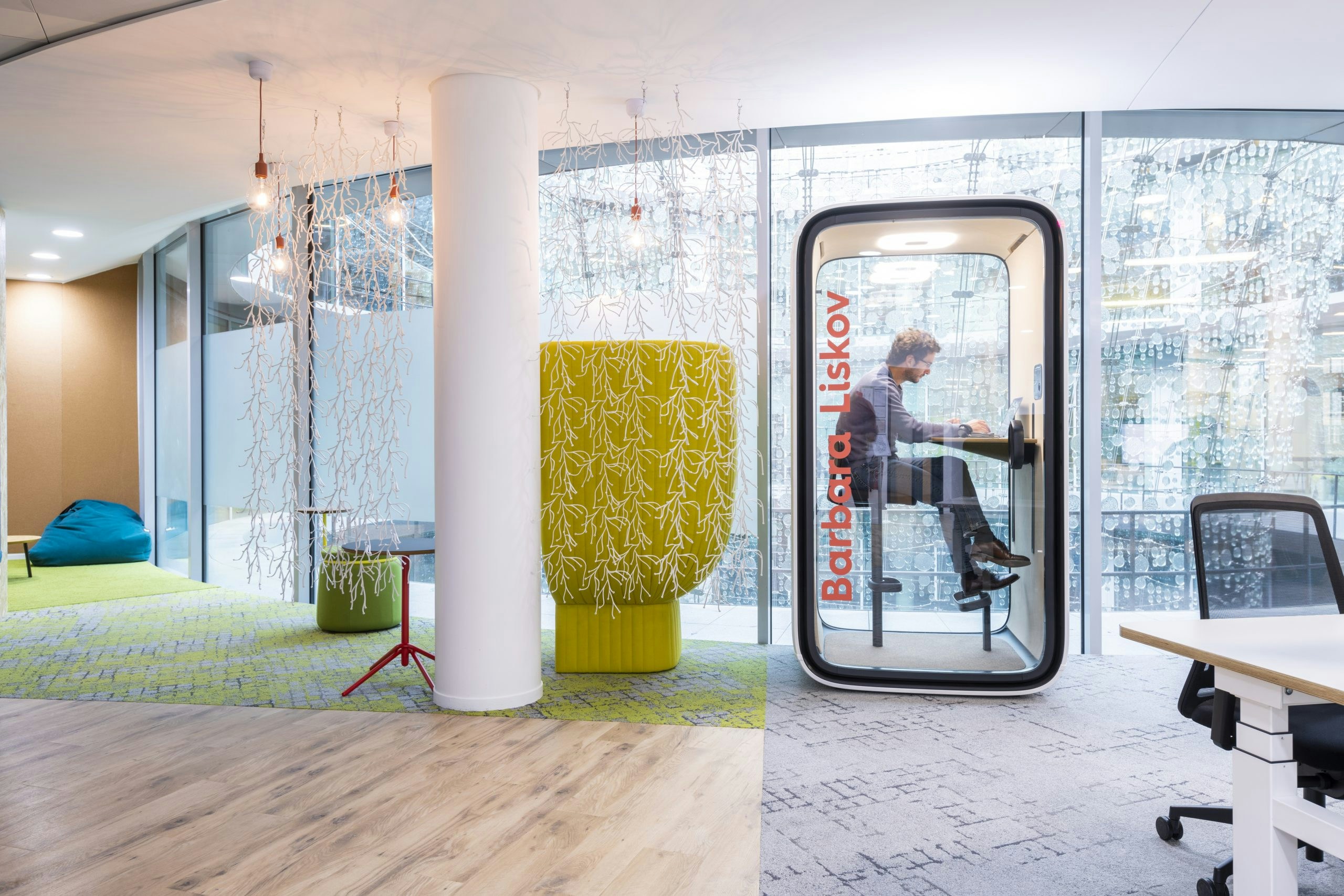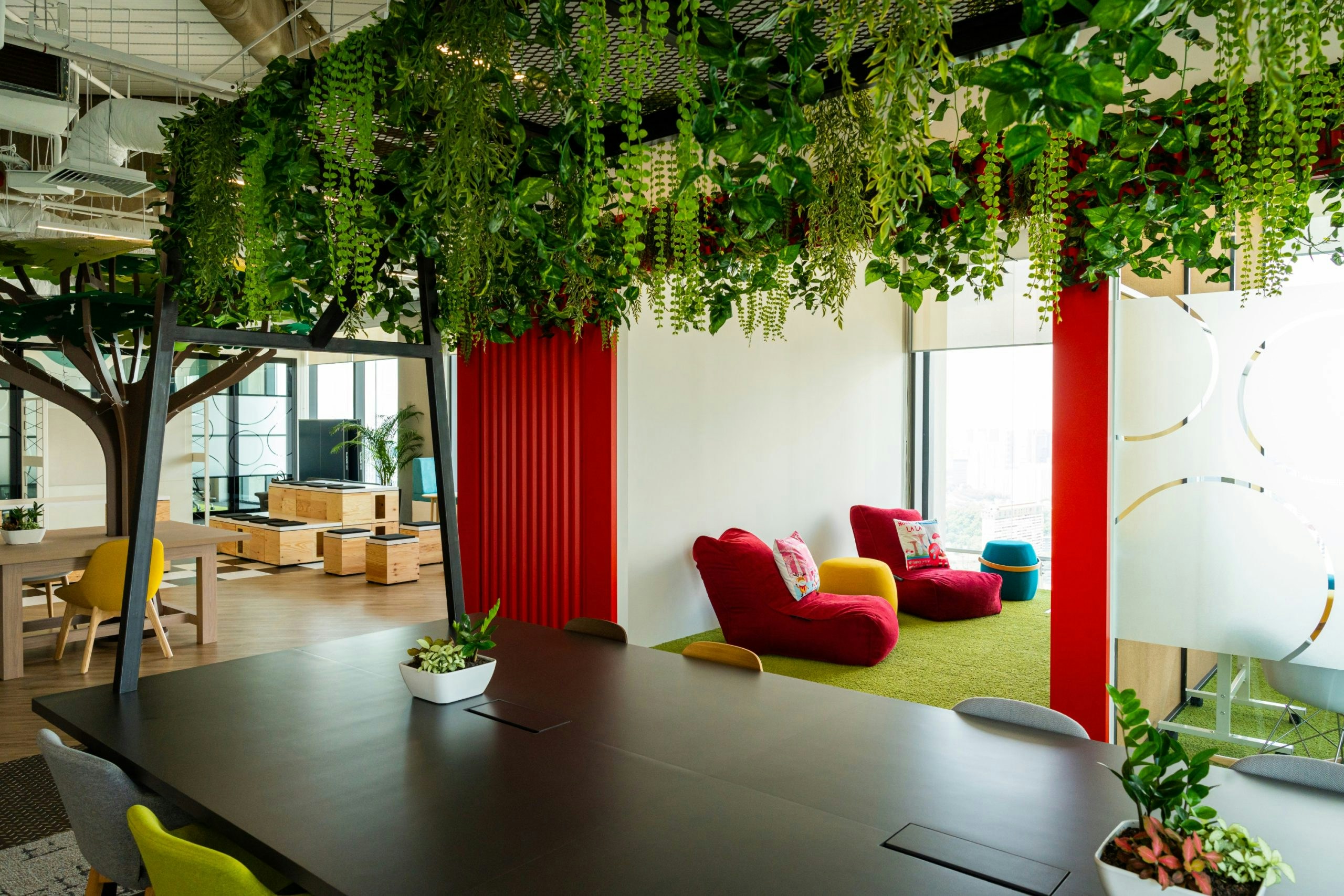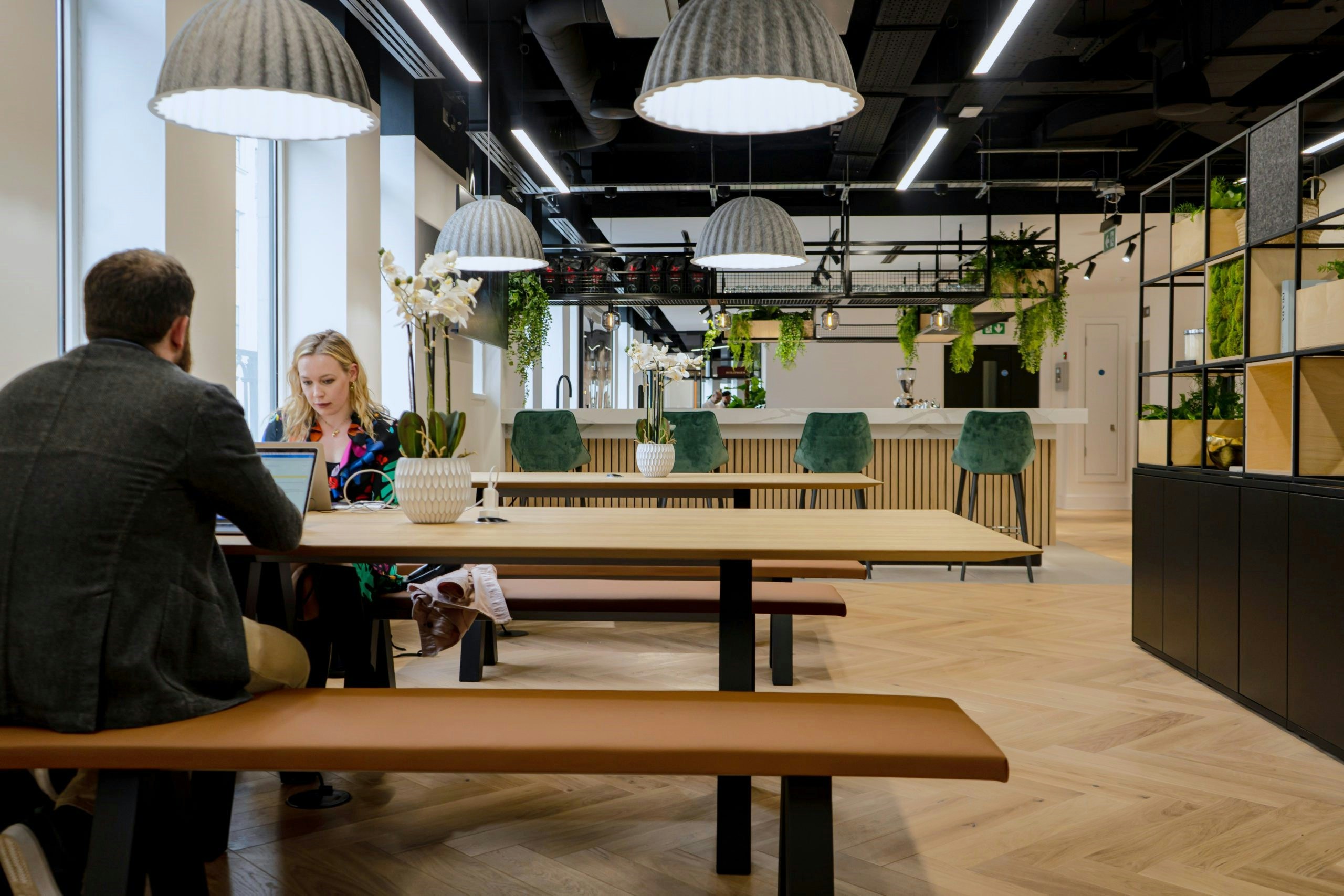Improving Workplace Acoustics
Optimising workplace acoustics is essential for productivity. We explore the ABCs of acoustics — Absorb noise, Block sound paths, and Cover unwanted noise — to demonstrate how offices can create a balanced sound environment. Additionally, we discuss acoustic zoning and the role of technology, data, and design in advancing workplace acoustics. Through our D&B projects we have helped companies, incorporating sound-absorbing materials, strategic layouts, and sound masking systems to ensure that the workspaces we create minimise distractions and promote focus and collaboration.





